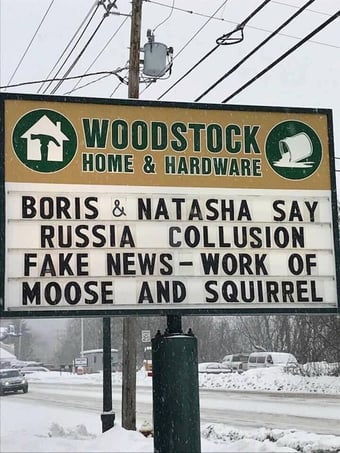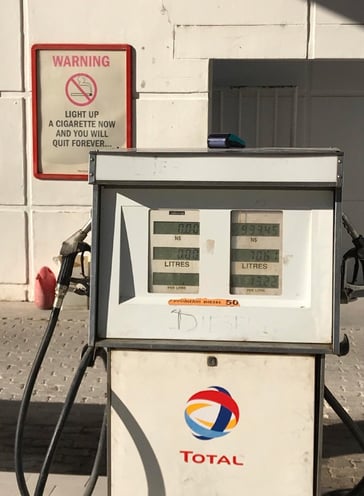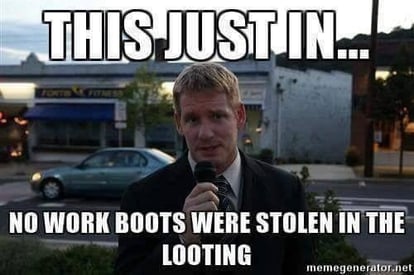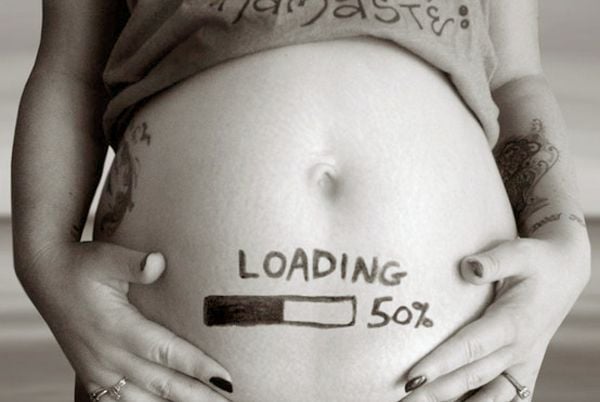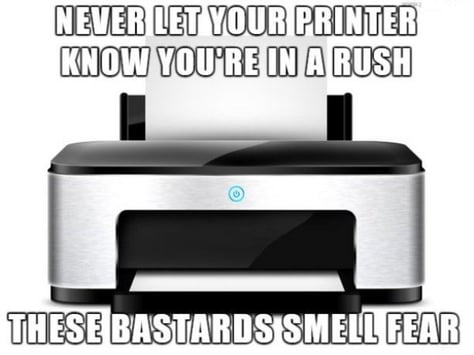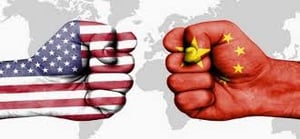 Today's article is not so much about commercial loans, but rather it is about economics and the status of the trade war with China. If you are not a commercial real estate lender or a commercial loan broker, kindly ignore the next three sections to get at my latest economic observations.
Today's article is not so much about commercial loans, but rather it is about economics and the status of the trade war with China. If you are not a commercial real estate lender or a commercial loan broker, kindly ignore the next three sections to get at my latest economic observations.

But first a comment to our commercial loan brokers. The big trades for commercial loan officers at banks and credit unions are now over. With CommercialMortgage.com currently stocked with over 4,000 different commercial banks and other commercial lenders, we now have enough of them. You can no longer trade lists of banks for hard copies of my popular commercial loan brokerage training courses.
However, we will, at the moment, still give you $300 off of one of our $549 training courses (Commercial Mortgage Brokerage, Practice, or Finding Investors) in exchange for a list of ten commercial loan officers working for FDIC-insured banks or NCUIF-credit unions. Watch, no one will take advantage of this trade because they could have gotten an even better deal during the summer. Its human nature. And then they will kick themselves when this offer ends on November 30th. [Shrug]

Helloooo? If you have been paying attention, there are now over 4,000 different commercial real estate lenders available to you for free on CommercialMortgage.com. Every search produces a different list of commercial lenders on the Lender List.

If you are a commercial hard money lender, pay attention! We are now selling listings on CommercialMortgage.com for just $1,000 per year. Listed lenders will also get free leads on deals that fit their requirements.
The first commercial lender to sign up gets listed first (after my own hard money shop, Blackburne and Sons). The second commercial lender to sign up gets listed second, and so on.
A couple of important Terms and Conditions. We are NOT taking listings for sub-prime, non-prime, or hard money commercial permanent loans of less than $1 million. We want these small leads for ourselves. If you normally make loans from $100,000 to $3 million, you can still get listed for commercial loans between $1,000,001 to $3 million.

If someone later offers us $1,500 per year, he gets to jump ahead of you. But within the $1,000 per year category, if you are the #3 lender to sign up, and lenders #1 and #2 don't renew next year, you get to move up into the #1 spot.
If you are a commercial hard money lender, you would be flipping retarded not to instantly jump on this offer. Les Agisim of Trevor Cole Financial was the first hard money lender to join C-Loans.com. He has since closed 51 commercial loans for us and earned over $1 million in fees. Contact Tom Blackburne at 574-210-6686.
But no one ever listens to me. Been telling you guys for over three decades that the real money in commercial real estate finance ("CREF") is in loan servicing fees. "Its the servicing income, silly."

George's Latest Economic Observations:
CHINA IS GETTING SLAPPED AROUND FINANCIALLY
The press has been giving substantial coverage recently to the suffering of American farmers and American manufacturing companies because of President Trump's trade war. You should know, however, that the suffering has been far from one-sided. Financially, China is getting seriously slapped around. With the U.S. economy continuing to expand, one could even make an argument that the U.S. is “winning”. "Hey, let’s both slit our wrists and see who bleeds to death sooner.” Ha-ha!
On September 4th, Bloomberg had an excellent article on the subject:
"Donald Trump’s trade war couldn’t have been more poorly-timed for the world’s second-largest economy. China’s current account surplus has plunged to near zero and is threatening to tip into a deficit. The yuan’s real effective exchange rate against a basket of trading partners is hovering near a record high, signaling the currency may have room to depreciate.”

I had forgotten the definition of a current account, so I looked it up in Investopedia: "The Current Account measures imports and exports of goods and services; payments to foreign holders of a country's investments and payments received from investments abroad; and transfers such as foreign aid and remittances.” In other words, China is no longer exporting immensely more stuff to the rest of the world than it is importing.
It true that China's trade surplus with the U.S. soared to over $31 billion this past month, but a big reason for this is because China is rushing to ship to the U.S. lots of stuff before Trump’s 25% import duty on $267 billion worth of Chinese goods.
The Chinese obviously will slap U.S. imports with an equally painful tariff, but here’s the thing: Because China exports far more to the U.S. than the U.S. exports to China, the Chinese will eventually run out of goods upon which they can levy a tariff.

Back in March of 2018, Trump sent out his famous tweet on trade wars: "When a country (USA) is losing many billions of dollars on trade with virtually every country it does business with, trade wars are good, and easy to win. Example, when we are down $100 billion with a certain country and they get cute, don’t trade anymore - we win big. It’s easy!” Of course his tweet is a gross over-simplification and ignores the severe damage that inflation will cause, but its hard to argue with the numbers. The Chinese will eventually run out of American exports upon which they can levy a tariff.
But let’s get back to the September 4th Bloomberg article: "The twin pressures pose a challenge to China’s efforts to keep yuan volatility to a minimum and may also undermine a core economic objective: Gaining an enhanced role for the yuan as a means of international payments. The currency’s share in global transactions has fallen to just 1.8 percent from 2.8 percent three years ago. Shanghai stocks have underperformed emerging-market peers in 10 of the past 12 quarters and trade near the lowest valuations in four years.”

Translation: While the U.S. stock market continues to climb, the Chinese stock market is getting beaten down. To make matters worse, investors are moving out the yuan. Who wants to buy Chinese companies during a trade war with the U.S.? Yes, its true that the Chinese have $3 trillion in foreign reserves, but they had $4 trillion in reserves just four year ago. About ten years ago China spend around $1.3 trillion of their foreign reserves in a single year propping up the yuan.
And to make matter even worse, China has already committed $1 trillion to its Belt and Road Initiative, an ambitious plan to rebuild the old Silk Road both on land and by sea, giving them trade access to 60% of the people on Earth. If the yuan continues to decline, a “mere” $3 trillion in foreign reserves will not last forever.

















